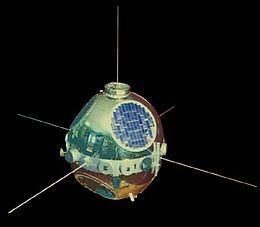Mission type Solar science COSPAR ID 1965-093A Mission duration Unknown Launch date 19 November 1965 Inclination 59.7° Launch mass 56.7 kg | Operator NASA SATCAT no. 1738 Manufacturer Naval Research Lab Inclination 59.7° Period 1.7 hours Last contact August 1967 | |
 | ||
Similar Student nitric oxide explorer, Solar Mesosphere Explorer, Explorer 8, Explorer 7, Explorer 11 | ||
The SOLRAD 8 satellite was one of the SOLRAD (Solar Radiation) program that began in 1960 to provide continuous coverage of solar radiation with a set of standard photometers. SOLRAD 8 was a spin-stabilized satellite oriented with its spin axis perpendicular to the sun-satellite line so that the 14 solar X-ray and ultraviolet photometers pointing radially outward from its equatorial belt viewed the sun on each revolution. Data were transmitted in real time by means of an FM/AM the satellite's telemetry system and were recorded by the stations on the STADAN tracking network.
The satellite observed the solar eclipse on May 20, 1966. This observation may have been the first observation of a solar eclipse by an artificial satellite.
The satellite performed nominally, except for the spin system, which failed to maintain 60 rpm (at spin rates below 10 rpm data reduction became difficult). The spin rate gradually decreased to 4 rpm on September 12, 1966. At that time, ground command succeeded in reactivating spinup to 78 rpm, which exhausted the gas supply. From this point, the spin rate gradually decreased to 10 rpm in August 1967, when data collection was substantially decreased.
